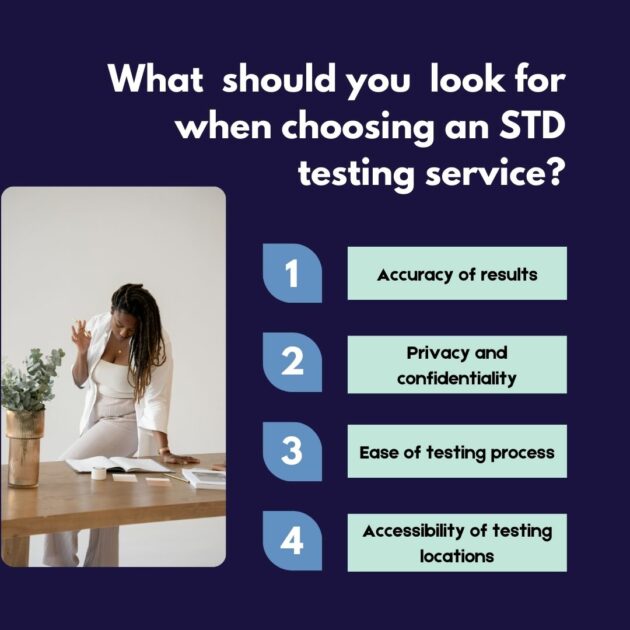Syphilis might sound like a disease from a bygone era, but it’s very much a modern health issue. Despite being known for centuries, this sexually transmitted infection (STI) continues to impact many lives today. With a resurgence in cases globally, understanding syphilis is crucial for effective prevention, early detection, and treatment.
By diving into the causes, symptoms, and treatment of Syphilis, we can better safeguard our sexual health and combat this age-old menace. Let’s learn more about it here!
A Basic Understanding: Syphilis Stages and Symptoms
Syphilis is a bacterial STI caused by the bacterium Treponema Pallidum. It is a disease with a rich history, having affected people for centuries. This STI progresses in four distinct stages, each with its own set of symptoms and potential complications:
- Primary: This initial stage is marked by the appearance of a painless sore or ulcer called a chancre at the site of infection, which can be on the genitals, rectum, or mouth. The chancre typically heals within a few weeks, but the bacteria remain in the body.
- Secondary: If untreated, Syphilis progresses to the secondary stage, where a rash may develop on the skin, often covering large areas of the body. This stage can also involve mucous membrane lesions called mucous membrane lesions, flu-like symptoms, and swollen lymph nodes.
- Latent: In the latent stage, this STI has no symptoms, but the bacteria remain in the body. This stage can last for years; without treatment, the infection can eventually advance to the tertiary stage.
- Tertiary: If left untreated at this point, it can progress to the tertiary stage, which can occur years later. This stage can cause severe health problems, including damage to the heart, brain, and nerves, leading to conditions such as cardiovascular Syphilis, Neurosyphilis, or Gummatous Syphilis.
How it Spreads
Syphilis primarily spreads through direct sexual contact with sores or rashes caused by this STD. These can be present on the genitals, rectum, or mouth. It is highly contagious during the primary and secondary stages when these visible sores are present.
However, it can also be transmitted through close personal contact with these sores or through direct contact with the rashes.
Additionally, this STI can be passed from an infected mother to her baby during pregnancy. This transmission, known as congenital Syphilis, can cause severe health problems for the newborn, including deformities, developmental issues, or stillbirth. Regular prenatal care and screening for STIs are crucial for preventing it.
Prevention of Syphilis
Preventing Syphilis is crucial for maintaining good sexual health and avoiding the complications associated with this STI. By taking a few key steps, you can significantly reduce your risk of contracting and spreading syphilis.
Here’s how you can protect yourself and your partners from this infection:
- Safe sex practices: Using condoms and dental dams during all forms of sexual activity is one of the best ways to protect yourself from Syphilis. These barriers help prevent direct contact with its sores and rashes.
- Regular STI screenings: Regular STI screenings are vital, as Syphilis can often be present without noticeable symptoms. Routine testing helps detect infections early and prevents them from spreading.
- Open communication with sexual partners: Open communication about your STI status and testing with your sexual partners is essential for preventing this disease. Discussing these matters can help you both make informed health decisions.
- Monogamous relationship: Being in a monogamous relationship with a partner who has tested negative for STIs can reduce your risk of Syphilis. However, maintaining safe sex practices and regular testing are still important.
Treatment and Cure for Syphilis
If you’re diagnosed with this STI, effective treatment is crucial to clear the infection and prevent serious health issues. Understanding the treatment options and following through with your care can help you recover and avoid future problems.
Here’s how you can treat this STI and maintain your sexual health:
- Antibiotics: Syphilis is treated with antibiotics, with penicillin being the most effective option. Completing the prescribed treatment course is crucial for clearing the infection.
- Full treatment course: Follow your healthcare provider’s instructions and complete the entire course of antibiotics. This ensures that the infection is completely eradicated and helps prevent the development of antibiotic-resistant strains.
- Follow-up appointments: Follow-up appointments are necessary to confirm that the infection is cured. These visits allow your doctor to check for any remaining infection and monitor your overall health.
- Informing partners: Let your sexual partners know about your diagnosis so they can get tested and treated. This step is essential to prevent reinfection and reduce the spread of this STI.
- Prevent reinfection: After treatment, continue practicing safe sex and get regular STI tests to protect your health and prevent future infections.
Conclusion

Syphilis has been a significant health issue for centuries and continues to be relevant today. By understanding the disease, practicing effective prevention methods, and following through with appropriate treatment, you can protect yourself and others from this STI. For reliable STI testing and treatment, Affordable Rapid Testing in Arizona offers quick, walk-in services in Phoenix and Scottsdale. Their cutting-edge technology and expert staff are here to help you manage your sexual health with confidence.
For more information or to schedule a visit, check out Affordable Rapid Testing, where you’ll find the support you need for a healthy, STI-free life.


